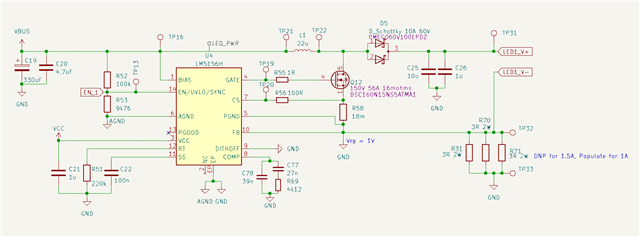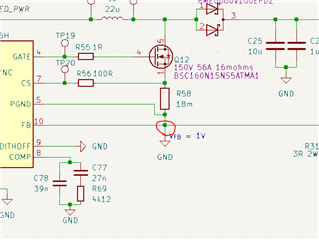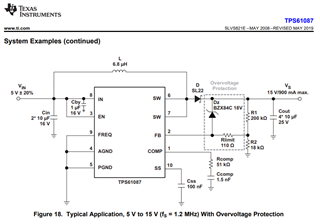Other Parts Discussed in Thread: LM51561H, LM5156, TPS61087
Tool/software:
Hi all,
I'm developing a boost converter for LEDs, based on a Webench simulation of the LM51561H. I incorporated modifications aligned with Figure 10-9 of the datasheet to implement a low-side shunt resistor, feeding back into the control loop.
The design is for a Vin of 20-30V, and boost up to 40-50V for a current of 1A or 1.5A (deepening of the shunt populated) it also must accept a PWM on the EN_1 to dim the led
Simulation link for reference: webench.ti.com/.../SDP.cgi
I have increased the voltage rating of the mosfet to allow a voltage output of 40-50V
Despite matching the rest of the component values to the simulation, I can't achieve oscillation. Any insights into what might be preventing switching operation would be greatly appreciated.

Best regards,
OP




